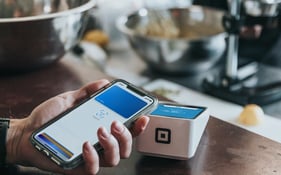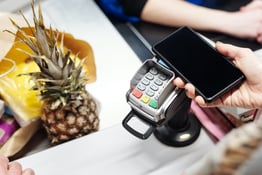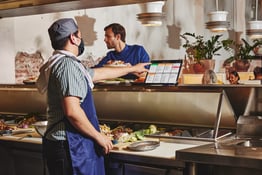It was a Friday in 2020, and like many restaurant owners, Will Clem was dealing with a staffing issue. Not enough employees showed up for the evening at his Tennessee drive-through, Baby Jack's. And Clem was on dad-duty for the night, preventing him from driving to the restaurant to help out.
So he decided to improvise. Clem opened his laptop, figured out how to log into his drive-through system, and pretty soon he was taking orders from home. The idea worked. Baby Jack’s stayed successfully up and running, and not one customer noticed that Clem was working out of his home office.
Fast forward to today, and Clem and business partner Orin Wilson have since built the concept into a full-fledged business, operating under the name Bite Ninja. Within a year, the tech company has attracted more than 4,000 workers seeking to take on restaurant shifts from home and is helping to staff around 60 restaurants, on track to grow to 1,500 restaurants by the end of 2022.
“The restaurant industry is historically inefficient with labor. You have a lunch period that lasts two hours, so you really have demand for two hours of labor, but you can’t ask people to get dressed, get in the car, and drive up to work just for two hours,” says Wilson. “We’ve solved a labor inefficiency problem, and managers love it because they don’t have to recruit, hire, and train 30- to 40-percent of their workforce.”
Bite Ninja replaces onsite cashiers at drive-through and counter services with remote cashiers, taking orders through software that’s integrated into restaurants’ existing menu boards and ordering systems. Bite Ninja refers to its remote workers as “Ninjas”, and there are two ways restaurants can employ them. First is with an audio-only option. Ninjas take drive-through orders through a speaker post, and most customers remain unaware they’re talking to someone remotely. Then there’s the video option. Ninjas take orders through a 55-inch video board, which generally prompts more customer interaction.
“You can see people as they walk up to the counter. There’s a background screen, so they’re not seeing my home, but you’ll get questions like, ‘Are you in the store? Are you AI?’, and I say, ‘Hi, it’s me talking to you. I’m actually in Lawton, Oklahoma.’,” says Ostyn Abshere, one of Bite Ninja’s first remote cashiers. “I’ve had people comment on my accent, or I’ll compliment their shirt, and it’s just generally a little more social than with a typical drive-through experience.”
Bite Ninja, of course, is designed for QSR and fast-casual establishments, not full-service restaurants. But its clients are usually ones that value people interaction with customers, as opposed to those seeking to replace cashiers with a fully automated operation.
Most operators hire Ninjas for two- to three-hour shifts, typically to cover the lunch or dinner rush, says Wilson. Operators can hire Ninjas in advance to fill out regular schedule rotations or call on Ninjas to pick up last-minute openings.
“Every now and then, someone will be running a slow period and then a bus pulls up and just floods them with a ton of people. Restaurants have a direct line to our shift supervision HQ, and they can say, ‘Hey, we’re getting flooded, we need someone.’ And usually it takes minutes to get someone on shift,” says Wilson.
All Ninjas go through an online learning and certification program facilitated by Bite Ninja. Fees are based on an hourly rate aligned with the market rate in the area. Wilson says operators currently pay $15 an hour on average. Bite Ninja also uses a surge pricing model, similar to platforms like Uber. If a holiday weekend causes demand for Ninjas to spike, for example, the hourly rate can increase up to $25.
“Our highest performing demographic with our Ninjas is stay-at-home moms – there’s no other job that allows you to work two-hour blocks here and there, and have your kid there with you,” says Wilson. “We also find a lot of rural areas gravitating towards our service. There’s a lot of places where the minimum wage is $7.25 an hour, so we’re giving them a raise to run these shifts.”
Abshere, who formerly worked as a nurse, was drawn to Bite Ninja after just having a baby, seeking social interaction in the middle of the pandemic and a job that offered flexibility. “I didn’t want to go back to the hospital, and this gave me something that I could do from home,” she says. “There just weren't a lot of opportunities like that for me here in Lawton.”
With many restaurants struggling to find staff, Wilson sees Bite Ninja as a solution to help operators decrease costs while also reaching a pool of candidates that might not otherwise gravitate to fast food work. The remote hiring technology platform is available to restaurants nationwide, and operators can sign up online.
“We like automation, and we use Alexa for shift supervision in some cases. But it’s like when you call a company’s customer service line – would you rather talk to a bot or a human?” says Wilson.
Grace Dickinson is a reporter at Back of House. Send tips or inquiries to grace@backofhouse.io.





